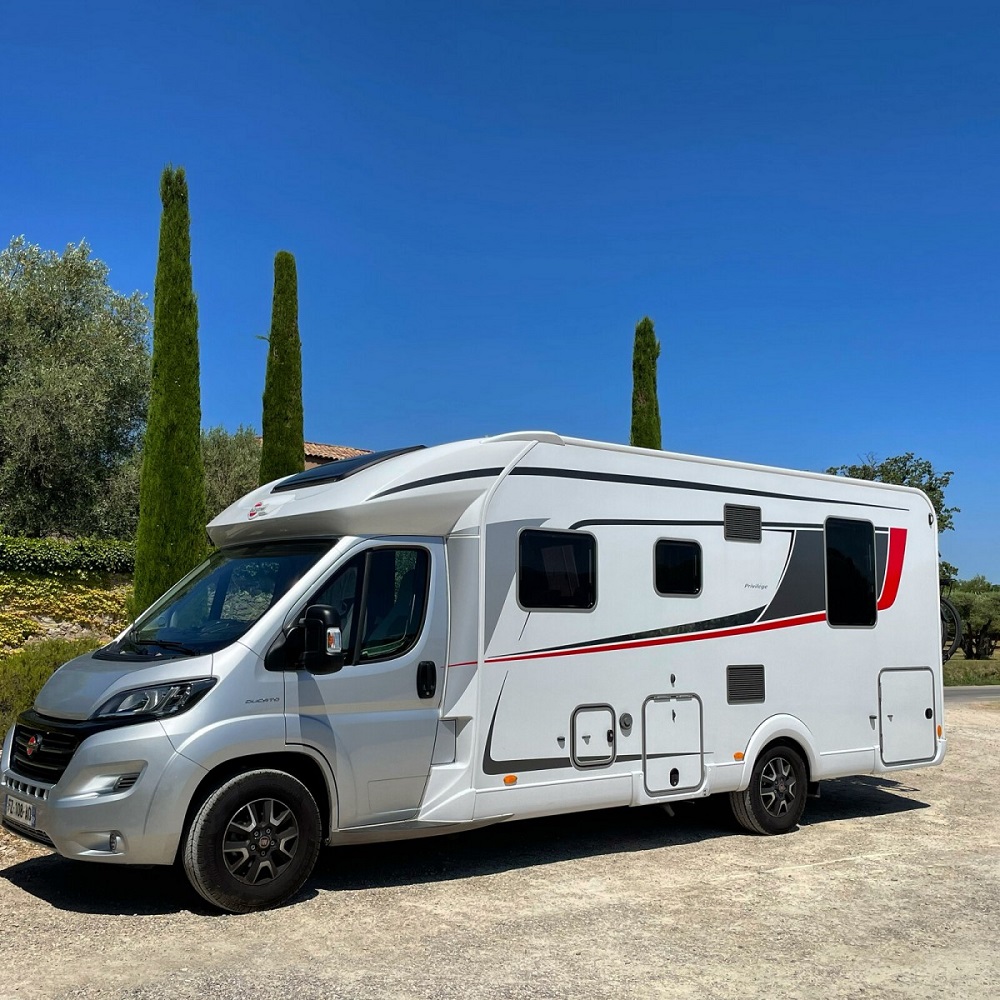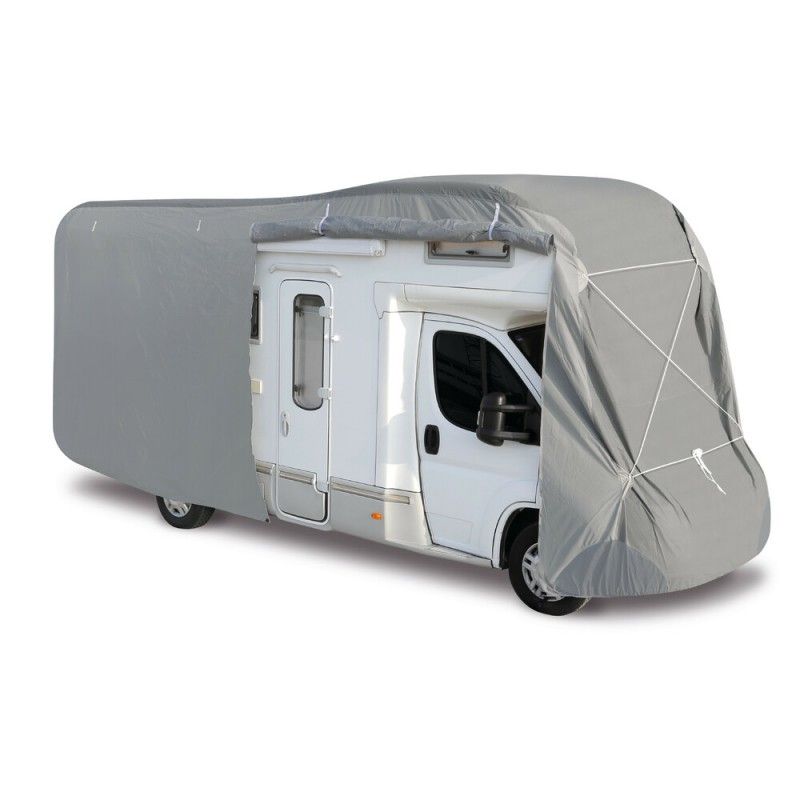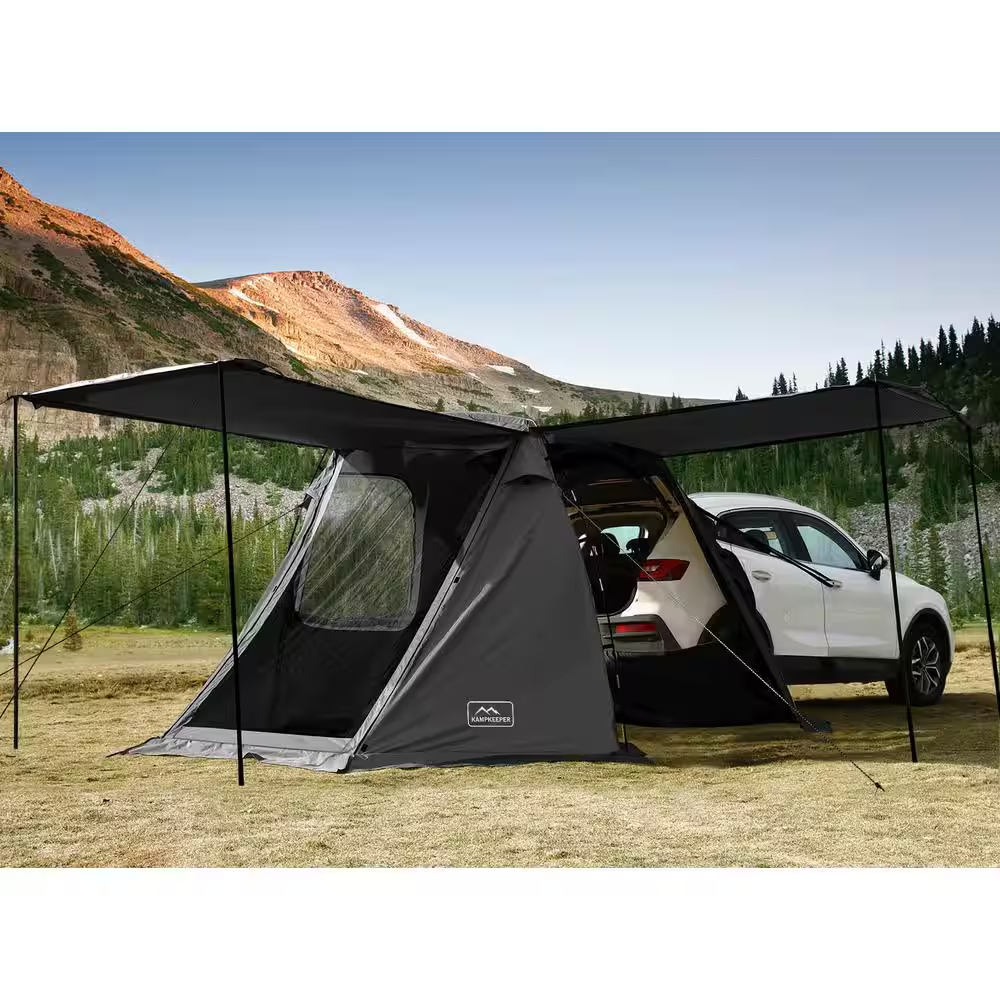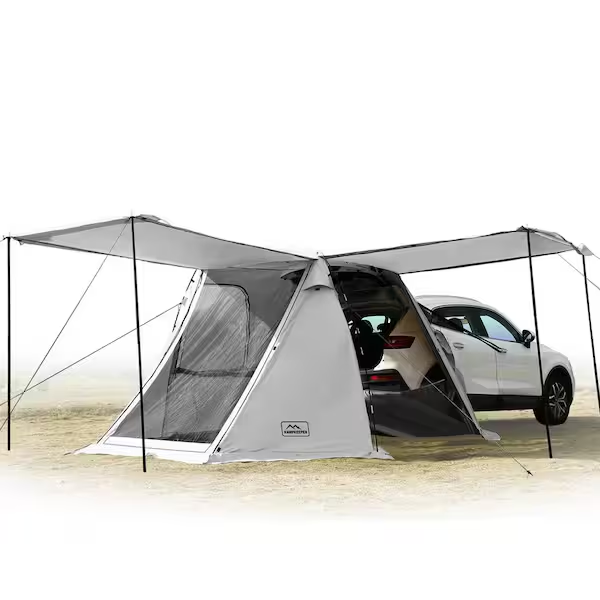What is a Camping Car?
Camping car, also known as RVs or campervans, offer a unique way to travel. They serve as both transportation and accommodation, making them perfect for road trips and adventures. Unlike traditional cars, camping cars come equipped with essential amenities like beds, small kitchens, and sometimes even bathrooms. These features make them a home on wheels.
Definition and Features of Camping Cars
A camping car is a specially designed vehicle for traveling and living comfortably. It combines driving with the convenience of a mobile living space. Key features often include:
- Sleeping areas with proper bedding.
- Compact kitchens with stoves and refrigerators.
- Bathrooms with toilets and showers (in larger models).
- Storage space for gear and supplies.
Camping cars vary in size and amenities, but they all aim to enhance travel freedom and comfort.
Types of Camping Cars Available
Camping cars come in multiple types to suit different needs and preferences:
- Class A Motorhomes: Large, luxurious, and equipped with top-tier amenities.
- Class B Motorhomes (Campervans): Compact and easy to drive, perfect for small families or couples.
- Class C Motorhomes: A mid-range option, often recognized by the cab-over bedroom space.
- Pop-Up Campers: Lightweight trailers that expand when parked, offering basic amenities.
- Truck Campers: Attach to the bed of pick-up trucks and are great for rugged adventures.
- Fifth Wheels: Large trailers requiring a special hitch, offering spacious layouts.
Each type caters to specific travel needs, from budget-friendly options to luxury experiences. Choosing the right one depends on your lifestyle and travel goals.

Benefits of Owning a Camping Car
Owning a camping car brings a wealth of advantages for travel enthusiasts. It combines travel, comfort, and flexibility into one versatile package. Whether exploring scenic landscapes or embarking on a long road trip, a camping car opens up unique possibilities.
Flexibility and Freedom in Travel
Camping cars redefine how you travel. They eliminate the need for rigid travel schedules. You can stop wherever inspiration strikes, whether at a forest trail or a beachside sunset. Since camping cars combine both transport and accommodation, they allow you to explore remote locations without worrying about hotel availability. Unlike traditional travel methods, you have the freedom to create an itinerary tailored to your interests. A camping car encourages spontaneity, letting you change plans without hassle. It provides the ultimate freedom to go wherever the road leads.
Cost Advantages Compared to Traditional Travel Methods
Camping cars often save money compared to conventional travel methods. Accommodation costs can be avoided entirely, thanks to the onboard sleeping area. Meal expenses are reduced since you can cook in the compact kitchen. While initial investments might seem high, they pay off during long-term use. Fuel and parking expenses are often less than the costs of flights and hotels. Additionally, many camping cars let you avoid extra baggage fees for travel gear and supplies. Owners of camping cars enjoy the cost-effective nature of exploring, making them a practical option for frequent travelers.

How to Choose the Right Car for You
Factors to Consider: Budget, Size, and Amenities
Choosing a camping car involves several important factors. Start with your budget. Determine how much you can afford, not only for the initial cost but also for maintenance and fuel expenses. Camping cars come in a wide range of prices, so there’s something for every budget.
Size is another key consideration. Larger models provide more space and amenities but can be harder to drive and park. Smaller options are more maneuverable and suitable for tighter spaces. Consider the number of travelers. If you’re a solo explorer or a couple, a compact camping car might be perfect.
Amenities can significantly affect comfort. Evaluate the sleeping arrangements, kitchen facilities, bathroom availability, and storage space. Think about your travel goals—do you need luxury or just basic functionality? Remember, a camping car should feel like a home away from home, providing the essentials you prioritize.
Popular Camping Car Models and Their Highlights
When selecting a camping car, knowing popular models can guide your choice. Here are a few highlights:
- Class A Motorhomes: These are large and luxurious, offering top-tier amenities like full kitchens and bathrooms. They are ideal for extended trips and roomy travel experiences.
- Class B Motorhomes (Campervans): Compact and easy to handle, they suit small families or couples. They provide essential amenities without being bulky.
- Class C Motorhomes: These mid-range options often feature a cab-over sleeping space. They balance size, comfort, and cost.
- Pop-Up Campers: Lightweight and affordable, these are perfect for short camping trips. They expand to provide more space once parked.
- Truck Campers: These attach to pick-up trucks and excel in rugged terrains. They’re great for adventure seekers.
- Fifth Wheels: Spacious and luxurious, these require special hitches. They’re excellent for families needing more room.
Explore these models with your preferences and needs in mind. The right camping car enhances your travel experiences and makes every adventure enjoyable.
Essential Gear and Accessories for Cars
Choosing the right gear can enhance your camping car adventures. Essential equipment ensures smooth trips and enjoyable experiences. From cooking tools to sleeping arrangements, well-chosen accessories make a huge difference.
Must-Have Camping Equipment
Here are some must-have items for your camping car:
- Portable Stove and Cooking Supplies: Prepare meals easily when you’re on the road. Include pots, pans, and utensils.
- Compact Refrigerator or Cooler: Keep food and drinks fresh during your travels.
- Comfortable Bedding: Ensure quality sleep with sleeping bags, pillows, or lightweight mattresses.
- Lighting Solutions: Carry flashlights, lanterns, and rechargeable lights for visibility at night.
- First Aid Kit: Be ready for emergencies with items like bandages and medications.
- Portable Chairs and Tables: Enjoy meals or relax outside with foldable furniture.
- Navigation Tools: Use maps or GPS systems to guide you on your journey.
- Power Supply and Chargers: Keep your devices charged with portable power banks or solar panels.
Make sure all items are lightweight and durable. Pack smart to meet your travel needs.
Tips for Maximizing Space and Storage
Organizing your camping car is essential for comfort. These tips help you maximize space:
- Use Stackable Containers: Store food, gear, and clothes in compact containers to save room.
- Install Hooks and Racks: Hang items like towels, jackets, and bags to avoid clutter.
- Utilize Under-Bed Storage: Place seldom-used items under beds or seating areas.
- Invest in Collapsible Furniture: Foldaway tables and chairs save valuable space.
- Use Vacuum-Sealed Bags: Reduce bulk of clothing and linens by compressing them.
- Organize by Priority: Keep essential items accessible and store less-frequently used gear away.
- Label Storage Areas: Mark storage bins to quickly locate what you need.
Efficient storage ensures your camping car feels roomy and organized. Proper planning avoids stress on the road.
With the right equipment and smart storage strategies, you can enjoy comfortable and hassle-free camping car trips.

Top Destinations for Car Travel
Embarking on a journey in a camping car opens doors to breathtaking destinations. From scenic national parks to serene seaside retreats, the opportunities are endless. Here are some of the top destinations to consider for your camping car adventures.
Stunning Locations Perfect for Camping Car Adventures
- Yosemite National Park, USA: Immerse yourself in stunning landscapes featuring granite cliffs and waterfalls. Yosemite offers well-equipped campgrounds for camping cars. Explore hiking trails, wildlife, and picture-perfect views.
- The Great Ocean Road, Australia: Drive along this iconic coastal route for its dramatic cliffs and beautiful beaches. Designated camping sites are scattered along the route, ideal for travelers seeking seaside serenity.
- Banff National Park, Canada: This park is a must-visit for nature lovers. Majestic mountains, crystal-clear lakes, and numerous camping spots make Banff a camping car paradise.
- The Scottish Highlands, UK: Known for its rugged beauty, the Highlands offer remote roads and cozy camping sites. Enjoy panoramic views, charming villages, and abundant outdoor activities.
- Patagonia, South America: For adventurers, Patagonia is unmatched. Expect towering glaciers, vast landscapes, and remote campsites.
- The South Island, New Zealand: Famous for its diverse beauty, South Island combines mountains, fjords, and beaches. Camping car parks abound, making it ideal for long explorations.
Tips for Finding Camping Car-Friendly Spots
- Research Campgrounds Ahead of Time: Use online maps and apps to identify camping car-friendly locations. Look for spots offering hookups, restrooms, and other amenities.
- Check National and Regional Parks: Most parks have designated spaces for camping cars, often equipped with essential facilities. Book in advance during peak seasons.
- Utilize Travel Directories: Platforms like road trip guides recommend places suited for camping cars. These guides often include reviews and local tips.
- Ask Local Experts: Visitor centers and tourism offices can provide guidance on accessible camping car areas.
- Follow Regulations: Some areas restrict overnight parking, so always verify local rules.
- Look for Free Parking Areas: Some countries, like Norway, allow free camping, provided you follow designated guidelines.
Choosing the right places ensures a memorable and hassle-free adventure in your camping car. Plan wisely and let the destination inspire your journey.

Maintenance and Care Tips for Cars
Keeping your camping car in good condition is essential for safe and enjoyable journeys. With proper care, your vehicle will last longer and perform better. Regular maintenance and quick fixes for issues can save you time and money.
Routine Maintenance Checklist
A routine maintenance schedule helps your camping car stay in top shape. Here’s a checklist to follow:
- Check Tires Regularly: Inspect tire pressure and tread to avoid wear and blowouts.
- Change Oil Frequently: Follow your manufacturer’s guidelines for oil and filter changes.
- Inspect Brakes: Ensure your brakes are responsive and replace worn-out brake pads promptly.
- Clean Air Filters: Replace dirty air filters for better engine performance and fuel efficiency.
- Test Batteries: Check battery health and clean terminals to avoid power issues.
- Maintain Fluid Levels: Regularly check and top up coolant, brake fluid, and transmission fluid.
- Inspect Seals and Joints: Check and reseal windows, doors, and roof to prevent leaks.
- Test Lights: Ensure all interior and exterior lights function, including signal and brake lights.
- Service Appliances: Check onboard appliances like stoves and refrigerators for proper operation.
- Clean Water Tanks: Sanitize and flush fresh, grey, and black water tanks to maintain hygiene.
Stick to this schedule for a worry-free experience on the road.
Common Issues and How to Address Them
Even with regular maintenance, issues may arise. Here are common problems and quick fixes:
- Dead Battery:
- Fix: Jumpstart the battery or replace it if it’s no longer functional.
- Flat Tire:
- Fix: Carry a spare tire and learn to replace it yourself.
- Water Leaks:
- Fix: Use sealant tape or adhesives to patch leaks temporarily; then replace damaged seals.
- Electrical Issues:
- Fix: Check fuses and wiring connections for loose or damaged components.
- Engine Overheating:
- Fix: Check coolant levels and ensure the radiator is functioning properly.
- Appliance Malfunctions:
- Fix: Clean and inspect appliance components or consult a professional.
- Stuck Doors or Windows:
- Fix: Lubricate hinges or tracks to enable smooth operation.
Preventive care reduces the likelihood of these problems. Always carry basic tools and spare parts while traveling.
Proper maintenance keeps your camping car safe, reliable, and ready for adventures. Treat issues early to avoid costly repairs later.

Sustainable Camping: Eco-Friendly Tips for Camping Car Owners
Camping in a camping car offers freedom, but it also impacts the environment. Sustainable practices help reduce this effect. By adopting eco-friendly habits, you can preserve nature while enjoying your travels.
Minimizing Environmental Impact
- Use Renewable Energy Sources: Equip your camping car with solar panels for clean energy.
- Opt for LED Lights: LED lights use less energy and last longer than traditional bulbs.
- Conserve Water: Install low-flow faucets and showers to minimize water usage.
- Choose Reusable Items: Avoid single-use products like plastic cutlery and paper plates. Pack reusable alternatives.
- Dispose of Waste Properly: Separate recyclables, compost organic waste, and follow local disposal rules.
- Maintain Your Camping Car: Keep the engine tuned to reduce emissions and improve fuel efficiency.
- Cook with Minimal Fuel: Use efficient stoves that consume less fuel for meal preparation.
By following these measures, you contribute to protecting the environment while traveling.
How to Camp Responsibly and Leave No Trace
- Stay on Designated Paths: Avoid damaging plants and soil by sticking to marked trails and areas.
- Carry Your Trash: Take all waste with you when leaving a site. Never leave litter behind.
- Use Eco-Friendly Cleaning Products: Choose biodegradable soaps and detergents for washing up.
- Avoid Disturbing Wildlife: Enjoy animals from a safe distance without feeding or disrupting them.
- Respect Quiet Hours: Keep noise levels down to maintain the serenity of natural surroundings.
- Camp in Existing Sites: Avoid creating new campsites to protect surrounding vegetation.
- Extinguish Fires Completely: Ensure campfires are not smoldering before you leave.
- Limit Energy Use: Turn off lights and appliances when not needed to conserve power.
Responsible camping ensures natural beauty remains unspoiled for others and future generations. Combine enjoyment with mindfulness in every aspect of your trip.
Planning Your First Camping Car Trip
Embarking on your first camping car journey can be exciting yet challenging. Proper planning ensures a smooth and enjoyable adventure. From crafting your itinerary to packing essentials, thoughtful preparation can make all the difference.
Tips for Itinerary Planning and Packing
- Set Travel Goals: Decide what you want to see and experience during your trip.
- Plan Your Route: Use maps or navigation apps to outline a clear travel path.
- Book Campsites Early: Reserve spaces at campgrounds to avoid last-minute hassles.
- Prepare a Packing List: Include essentials like clothes, food, and camping gear.
- Test Your Camping Car: Check its condition and practice driving before hitting the road.
- Pack Light: Use compact storage solutions to maximize space.
- Bring Emergency Supplies: Pack first aid kits, tools, and spare parts.
- Plan Meals: Pre-prepare food or carry easy-to-cook ingredients.
- Check Weather Conditions: Research forecasts to dress and pack appropriately.
- Stay Flexible: Leave room for adjustments in your plans to embrace unexpected discoveries.
Mistakes to Avoid for a Smooth Adventure
- Overpacking: Avoid carrying unnecessary items that take up space and weight.
- Ignoring Vehicle Maintenance: Always inspect tires, filters, and fluids before departure.
- Skipping Research: Study camping regulations and local rules to avoid fines.
- Failing to Budget: Always allocate funds for fuel, food, and emergencies.
- Poor Time Management: Plan stops and driving hours wisely to avoid exhaustion.
- Neglecting Safety Gear: Bring items like reflective vests and tools for roadside emergencies.
- Not Checking Campsite Amenities: Confirm water, electricity, and bathroom availability beforehand.
- Rushing Through Destinations: Allow time to explore and enjoy each stop fully.
- Underestimating Fuel Stops: Plan refueling locations to avoid getting stranded.
- Forgeting Important Documents: Carry licenses, permits, and insurance details.
Thoughtful planning and awareness of potential pitfalls ensure a safe and memorable first journey in your camping car.